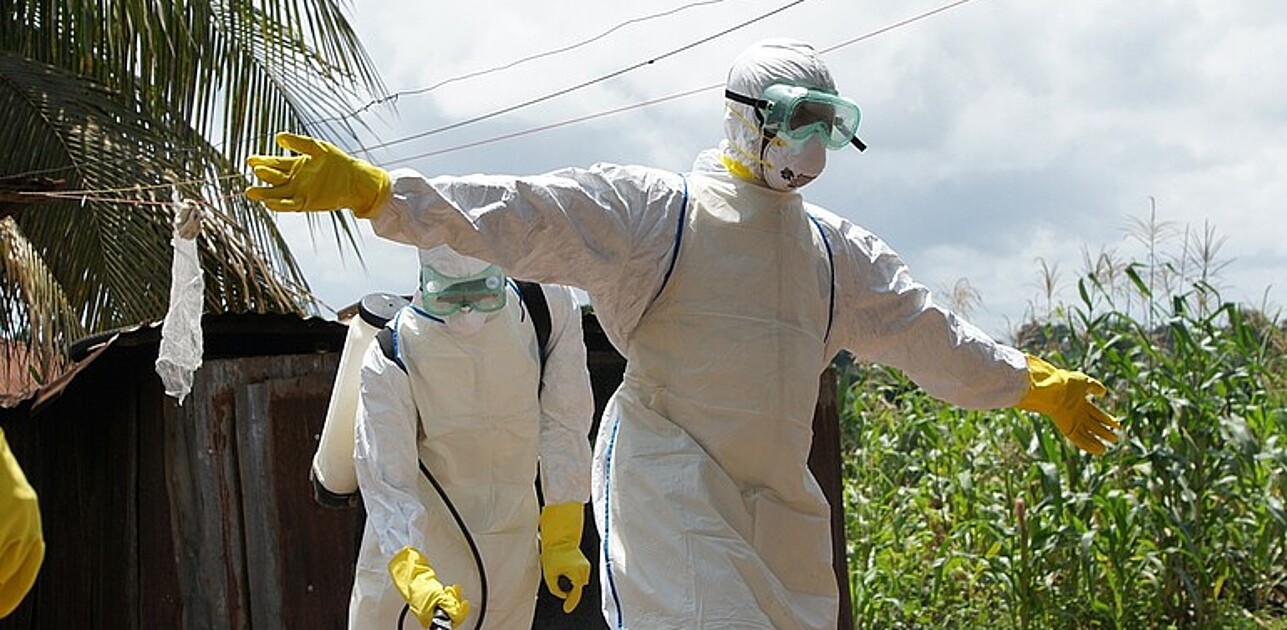

Article: Tuesday, 20 June 2017
Médecins sans Frontières (Doctors Without Borders) is an NGO with a special mission: to provide medical care in places ordinary physicians can’t reach. Making sure all their long-term clinics have the right amount of the roughly 2,000 stock keeping units (SKUs) with which each is supplied is an enormous logistical challenge.
Médecins sans Frontières (MSF) is such a courageous group it’s easy to forget that they don’t just send médecins; they also send medicines. As an NGO working in often extreme situations, keeping their supply chain functioning as optimally as possible is a huge undertaking. For the past decade, a group of us in RSM’s department of technology and operations management have been involved in a project to make that job a little easier.
The engagement began when MSF’s operational centre in Amsterdam contacted us 10 years ago, and asked if we had a student who could help them improve their information management. We did, and over time, more students followed him. It didn’t take long to realise, however, that the challenge went beyond information, straight to the root of MSF’s supply chain. Like many non-profits, MSF had a somewhat outdated supply chain when compared to the state of the art in the private sector.

However, MSF is rapidly making progress and we feel very grateful for having had the opportunity to make a contribution. In our latest study on MSF, we analysed the internal and external factors that affect the forecasting and order-planning process and identified opportunities to improve MSF’s supply chain, insights that we believe may be of value not just to that organisation but to any non-profit group that faces supply challenges. Better forecasting and planning reduces stock-outs, over-stocking, and expiration of goods, which in turn saves time, reduces costs, improves patient care, and may even save lives.
In this latest study, our goal was to understand exactly how the supply chain worked in practice – who orders the supplies, how they get to their destination, and when the clinic ended up with either too few or too many, and what had happened that led to that situation.
The MSF supply chain functions under constant, tremendous strain. They are always short of money. The work is so tough that many of the doctors at these clinics are on one-year rotations, which means that it’s difficult to build much institutional memory in the field. To make matters worse, the nature of their mission entails setting up clinics in places with little or no infrastructure, a desperate population, and often, armed men who may or may not be answerable to a higher authority and who may or may not pilfer supplies. Finally, stock outs are never taken lightly, particularly in these hard-to-reach areas, and may literally be a matter of life and death. In an internal report issued in 2015, MSF stated the problem bluntly:
“We cannot forecast, do not focus enough on timely delivery of goods, no real quality control for medical local purchases ...[we need] an improved ability to consistently deliver the right goods when needed.”
Our first step was to encourage MSF operations to get the field clinics to record their consumption. We asked MSF’s Operational Centre in Amsterdam (MSF-OCA) to ask its field personnel to collect details on the consumption of over 2,000 medical SKUs stocked in 19 long-term MSF projects in 2013. The projects were supplied by missions operating in eight countries: Bangladesh, Congo, Ethiopia, Haiti, Nigeria, Pakistan, South-Sudan and Yemen. We ended up with 11,486 usable records for analysis in all.
Simply collecting the consumption data was a challenging project for MSF. As Anna Eschweiler, medical pharmacy advisor for MSF-OCA, told us, even collecting the consumption data was a challenge: ‘We do this in many contexts where staff often have poor literacy and numeracy skills. It has been a big effort by all to get this far.’
Once we had a detailed sense of what materials were used when, we could begin to develop a clearer picture of actual usage patterns, which we mapped against initial forecasts and field orders. Overall, we found that 22 per cent of all medical items suffered a stock-out at some point during the year, 67.8 per cent were at risk, and 38 per cent risked expiration.
Forecasting at MSF is part of the order and procurement process, which involved internationally active operations centres, such as MSF’s Amsterdam operations centre, national missions, and local project sites. Each individual project unit orders medical supplies at fixed times during the year from the Amsterdam Procurement Unit, usually every four to six months, from a standardised list of roughly 2,200 medical items.
Forecast accuracy, somewhat surprisingly, turned out to be highest during armed conflicts but lower once the shooting stopped. Our theory is that this happened because the nature of the medical emergencies changes when peace breaks out. The demographics and size of the population may also change dramatically.
Several other internal and external factors tended to influence the forecasting and order-planning process as well. One is systematic over-compensation of safety stocks of more critical items. If those stocks could sit on the shelf indefinitely, that would be inefficient but arguably a tolerable cost – buffer or suffer, as the saying goes. However, when it comes to medical logistics, not all serve that stand and wait: many items have a limited shelf life and eventually expire.
We also found that at the clinic level, people tended to over-forecast their consumption. Ideally, consumption forecasts should be unbiased, with order planners at the operations centre deciding what the margin of safety to add to the order. Instead, both the field medical team and the planners in Amsterdam were adding safety stocks, resulting in unnecessarily high stock levels.
Part of the tendency toward overstocking is that the consequences of a supply rupture may go beyond simply being out of a particular item. ‘The impact of ruptures, apart from the quality of care, disrupts the supply chain at all levels. A critical rupture means the supply staff in the project, mission and HQ effectively have to stop everything to identify a source and a quick supply of the product,’ says Nontas Papadimitriou, logistics coordinator for India in the MSF-OCA.
In 2016, the MSF Operations Centre responded to these and other observations, and initiated a plan to improve MSF’s supply chain forecasting and planning process. Once proper data collection and analysis programmes are put in place, their supply chain should become much more efficient. Eventually, they may even be able to predict demand after discounting a variety of local contingencies, such as the condition of the physical infrastructure or the political climate (for instance, the relative likelihood of looting if a truck is stopped or blocked by rebel forces).
We think their next steps may also include:
How much is used is not the same as how much is needed. The current record system records consumption rather than actual demand, which implies that actual demand may be understated in the case of stock outs, and as a consequence, the risk of rupture is underestimated.
The current system notes when a rupture occurs, but not where in the supply chain it happened.
More work lies ahead, but MSF is now definitely on the right track. Today, MSF’s forecasting and planning process is considered best practice in humanitarian logistics, and its example is now leading to a new phase of development for the sector: standardised data collection and planning. Once proper data collection and analytics are in place, it may be possible to even begin predicting demand. Humanitarian supply chains differ from retail supply chains in many respects, but as one of our colleagues has noted, they are similar in other ways – perhaps the most important of which is that as crazy as our world can be, its patterns can be analysed, and our navigation of them improved.

Rotterdam School of Management (RSM)

This article draws its inspiration from the paper Demand forecasting and order planning for humanitarian logistics: An empirical assessment, written by Erwin van der Laan, Jan van Dalen, Michael Rohrmoser and Rob Simpson, and published in the Journal of Operations Management (STAR), Volume 45, July 2016, Pages 114–122. DOI: doi.org/10.1016/j.jom.2016.05.004


Science Communication and Media Officer
Rotterdam School of Management, Erasmus University (RSM) is one of Europe’s top-ranked business schools. RSM provides ground-breaking research and education furthering excellence in all aspects of management and is based in the international port city of Rotterdam – a vital nexus of business, logistics and trade. RSM’s primary focus is on developing business leaders with international careers who can become a force for positive change by carrying their innovative mindset into a sustainable future. Our first-class range of bachelor, master, MBA, PhD and executive programmes encourage them to become to become critical, creative, caring and collaborative thinkers and doers.
